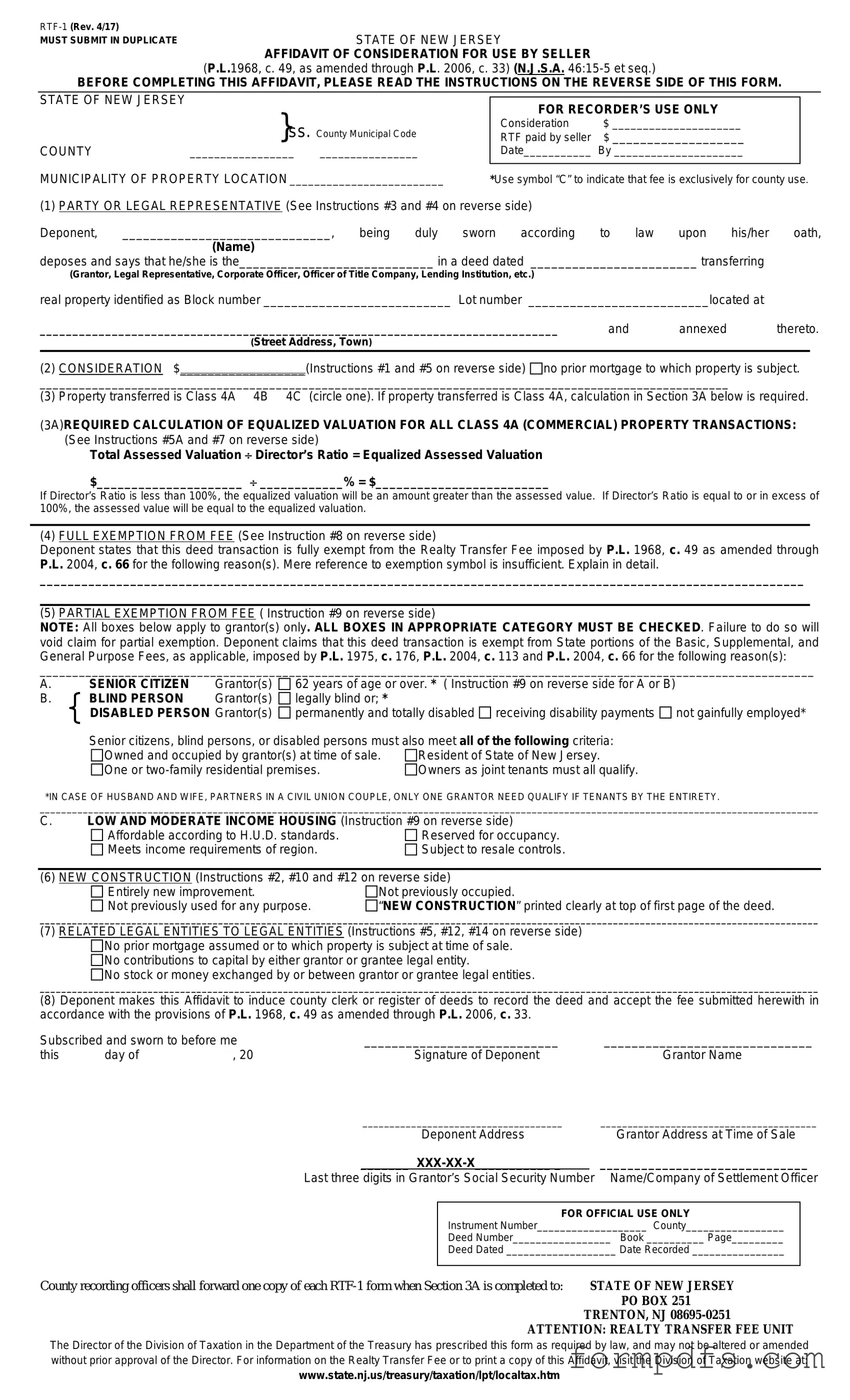What is the New Jersey Affidavit of Consideration RTF-1 form?
The New Jersey Affidavit of Consideration RTF-1 form is a legal document used in real estate transactions. It serves to disclose the consideration, or price, paid for a property when it is transferred from one party to another. This form is crucial for ensuring that the appropriate transfer taxes are calculated and collected by the state. It helps maintain transparency in property transactions and is typically required when recording a deed in New Jersey.
Who needs to complete the RTF-1 form?
The RTF-1 form must be completed by the seller or grantor of the property, or their authorized representative. If the property is being sold, the seller is responsible for providing accurate information regarding the sale price. Buyers may also need to be involved in the process to ensure that all details are correctly represented. In some cases, real estate agents or attorneys assist in filling out the form to ensure compliance with state regulations.
What information is required on the RTF-1 form?
The RTF-1 form requires several key pieces of information. This includes the names and addresses of the buyer and seller, a description of the property being transferred, and the total consideration or purchase price. Additionally, the form may ask for details about any liens or encumbrances on the property. It is essential to provide accurate and complete information, as any discrepancies can lead to delays in the transaction process.
Where can I obtain the RTF-1 form?
The RTF-1 form can be obtained from various sources. It is available online through the New Jersey Division of Taxation’s website, where you can download a copy. Many real estate offices, law firms, and title companies also have the form on hand. If you prefer a physical copy, you can visit your local county clerk's office, where they can provide you with the necessary documentation.
Is there a fee associated with submitting the RTF-1 form?
There is no direct fee for submitting the RTF-1 form itself. However, the information provided on the form is used to calculate transfer taxes, which must be paid at the time of the property transfer. These taxes are based on the consideration amount and can vary depending on the property's location and value. It is important to budget for these costs when planning a real estate transaction.
What happens if the RTF-1 form is not submitted?
If the RTF-1 form is not submitted during a property transfer, it can lead to complications. The county clerk may refuse to record the deed, which means the transfer of ownership is not legally recognized. Additionally, failing to submit the form may result in penalties or fines from the state. To avoid these issues, it is crucial to ensure that the RTF-1 form is completed and submitted in a timely manner.
Can the RTF-1 form be amended after submission?
Yes, the RTF-1 form can be amended if there are errors or changes that need to be addressed. To do this, you will typically need to submit a corrected version of the form along with an explanation of the changes. It is advisable to contact the county clerk’s office for guidance on the proper procedure for making amendments. Promptly addressing any inaccuracies helps prevent potential legal issues down the line.
